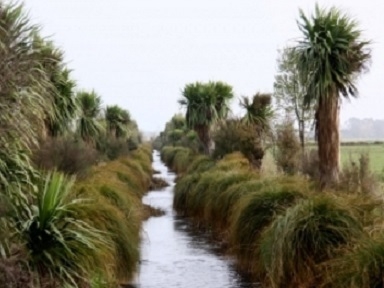Canterbury riparian

A riparian zone is the interface between land and a river or stream
Waterways include rivers, streams, creeks, drains, ponds, swamps and wetlands that go through or border a farm – basically anywhere that natural water runs or ponds. The area beside waterways that forms the connection between water and land is the riparian or waterway margin.
Riparian zones can be used to maintain and improve water quality. Once fenced and planted, they filter phosphorus, sediment and bacteria that leave the land as runoff. Healthy riparian zones will improve the health of your waterway.
Having a plan is the key to getting value for your money and doing it right the first time. Your riparian planting plan should cover the three steps of fencing, planting and maintaining your riparian zones.
An Environment Canterbury biodiversity officer or land management advisor can answer questions you have about fencing and riparian planting during a property visit. They can help develop riparian plans with you, tailored to your needs. It’s free and it’s the best way to find out what funding or support is available.
Source: Wetland and river/stream margin native plants : DOC
See more detailed plant listing for Waterways
PLANT NAME (T = threatened, R = rare)
Extra resources on riparian zones
- Christchurch City Council Riparian planting.pdf
- Dairy New Zealand Getting riparian planting right.pdf
- Environment Canterbury Living streams handbook.pdf
The benefits of restoring a Canterbury riparian zone
- Improvements in water quality
- Vegetation traps sediment
- Reduction in water temperature
- Filters water before entering stream
- Minimises erosion
- Reduction of flood impacts
- Provide food and cover and habitat for wildlife
- Enhances landscape

Hours
Open 7 days a week: 10am-4pm